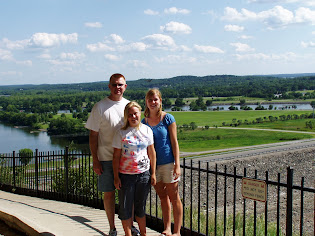 A recent dispute over oil has brought to the surface the tensions that exist between Argentina and the United Kingdom over the sovereignty of the Falkland Islands. Argentina has claimed sovereignty over the islands since they invaded them in 1982. The invasion started a war which ended with the deaths of roughly 650 Argentine and 250 UK soldiers. However, Britain has held sovereignty over the islands since 1833, and still today the government of the Falkland islands pledges allegiance to Britain. UK also holds a military presence in the islands, as seen in the picture to the right.
A recent dispute over oil has brought to the surface the tensions that exist between Argentina and the United Kingdom over the sovereignty of the Falkland Islands. Argentina has claimed sovereignty over the islands since they invaded them in 1982. The invasion started a war which ended with the deaths of roughly 650 Argentine and 250 UK soldiers. However, Britain has held sovereignty over the islands since 1833, and still today the government of the Falkland islands pledges allegiance to Britain. UK also holds a military presence in the islands, as seen in the picture to the right.  A British oil company, Desire Petroleum, started drilling around the islands and Argentina is not pleased. They recently submitted paperwork to the U.N. in attempt to claim ocean surrounding the Falkland Islands. (see left) Argentina argues that 11 years of research has led them to believe that the Falkland Islands lie on the extension of the continental shield which they own. The paperwork also laid claim to territories near Antarctica which are also being disputed, this time with Chile. Christina Fernandez de Kirchner signed a decree which would require all ships navigating from Argentina to the Falklands to carry a government permit, on Tuesday. The UK and Desire Petroleum claim that the area in which they are drilling is safely within UK waters. Desire believes the area will be productive for oil and quite possibly gas as well. They have begun a 30 exploratory drill.
A British oil company, Desire Petroleum, started drilling around the islands and Argentina is not pleased. They recently submitted paperwork to the U.N. in attempt to claim ocean surrounding the Falkland Islands. (see left) Argentina argues that 11 years of research has led them to believe that the Falkland Islands lie on the extension of the continental shield which they own. The paperwork also laid claim to territories near Antarctica which are also being disputed, this time with Chile. Christina Fernandez de Kirchner signed a decree which would require all ships navigating from Argentina to the Falklands to carry a government permit, on Tuesday. The UK and Desire Petroleum claim that the area in which they are drilling is safely within UK waters. Desire believes the area will be productive for oil and quite possibly gas as well. They have begun a 30 exploratory drill. Many Latin American countries are allying with Argentina. These countries include both Venezuela and Nicaragua. Hugo Chavez, of Venezuela, made a statement regarding the situation telling Britain that, "[the] time for empires was over." Argentina desperately needs the support of their fellow Latin American countries, as they are no match for the powerful UK. Argentina has acknowledge that a verbal or written agreement must be reached between the two countries in order to resolve the issue. They have ruled out military violence as a solution, because they have neither the resources nor the military intelligence to face the strong UK forces.
Our text book, Diversity Amid Globalization, highlights many disputes regarding land. Specifically, the disputes involve the physical aspects of the land which make it profitable for a country. For example, our book talks about Chile and Bolivia. Bolivia is still resentful that Chile took over their coastal territories, land-locking them. Bolivia has no ocean front trade access now, and is in a disadvantageous location in terms of warfare. There are other problems which exist because of the dispute over profitable land and natural resources, such as deforestation. The growing problem of deforestation in Brazil is occurring because farmers and ranchers want to use the land to make a living. The soil is producing crops and the land can be cleared to use for grazing.
It is that same principle that is the driving force behind the dispute over the Falkland Islands today. The ocean territories surrounding the Falkland Islands may prove to be largely profitable due to the possibility that large amounts of natural resources, in this case oil and gas, exist there. Already struggling Argentina defends their ownership of the continental shield on which the Falklands islands sit. It is in attempt to gain the territory for themselves and to win back what they have considered to be rightfully theirs since 1982. The possession of the islands, and the natural resources which are found there may help Argentina to grow economically.
Despite growing tensions, the dispute is at a standstill. The UK forges ahead paying no attention to Argentina's threats. All Argentina can do is wait and see what the UN has to say about their submitted petition for possession of the territory.
Resources
CNN: British Oil Rig Begins Drilling off Falklands
BBC:Argentina Claims Vast Ocean Area
BBC:Drilling Begins Off the Falklands












